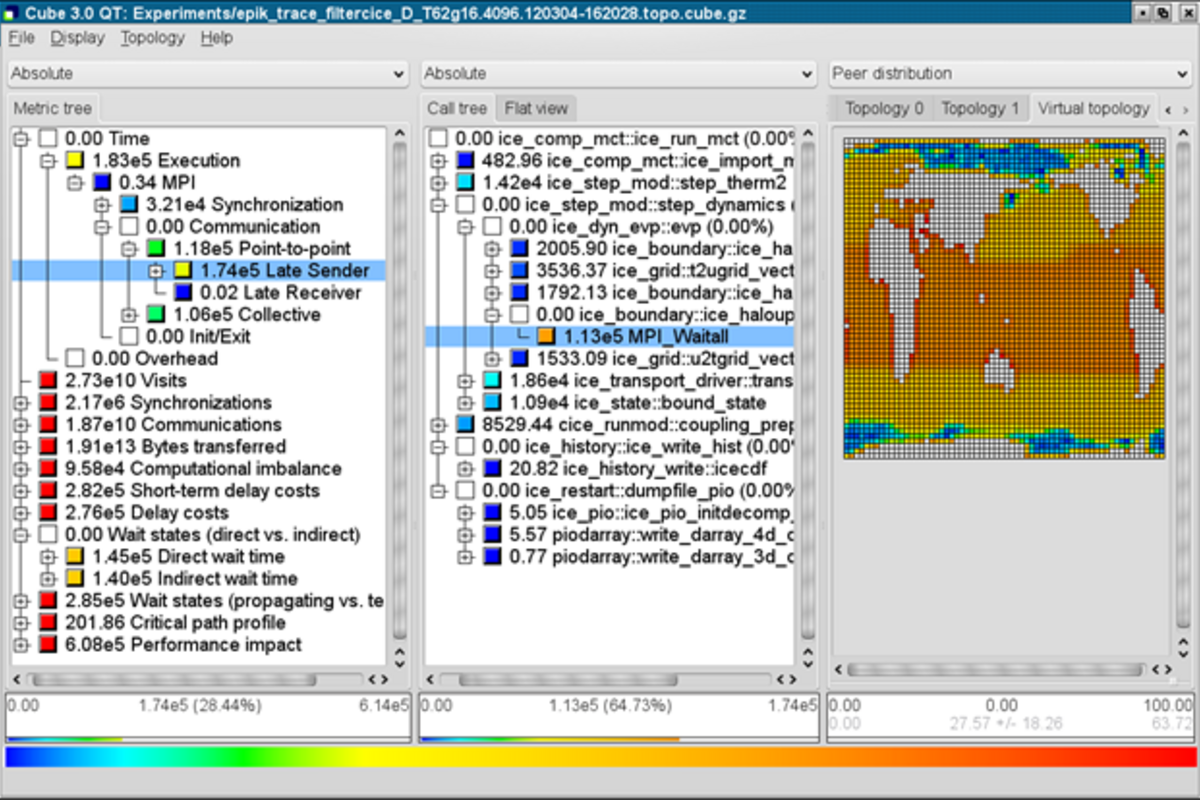ENGINEERING AND CFD
Jülich Researchers Employ JUWELS for Next-Generation Performance Analysis Tools
Principal Investigator:
Dr. Bernd Mohr
Affiliation:
Forschungszentrum Jülich
Local Project ID:
SCALASCA
HPC Platform used:
JUWELS at JSC
Date published:

Figure 1: Typical result display from a Scalasca trace analysis. Left pane shows the metrics measured and calculated. Middle pane shows the distribution over the call tree of the application of the selected value in the metrics pane (blue bar). Right pane shows distribution of the selected call-path over the processes used for the measurement. In the example shown, this is done via a virtual MPI 2D Cartesian topology used by the application.
A team of researchers at the Jülich Supercomputing Centre (JSC) turned to the power of the centre’s JUWELS supercomputer to develop and refine the Scalasca and Score-P toolsets. Score-P is a highly scalable tool for collecting profile and tracing data of high-performance computing (HPC) applications. Scalasca helps code developers and users efficiently assess the performance of their applications and identify gaps in efficiency based on the collected data from Score-P.
As part of a larger collaboration between JSC and The Helmholtz Zentrum Dresden-Rossendorf, Oak Ridge National Laboratory, and the University of Delaware, the team used these tools as part of the selection for the new suite of SPEChpc 2021 benchmark codes. The team executed and analysed multi-GPU nodes on the JUWELS Booster and compared there results to other HPC systems with Nvidia V100 and AMD MI100 GPUs.
For the full report, click here.
For the journal article, click here.